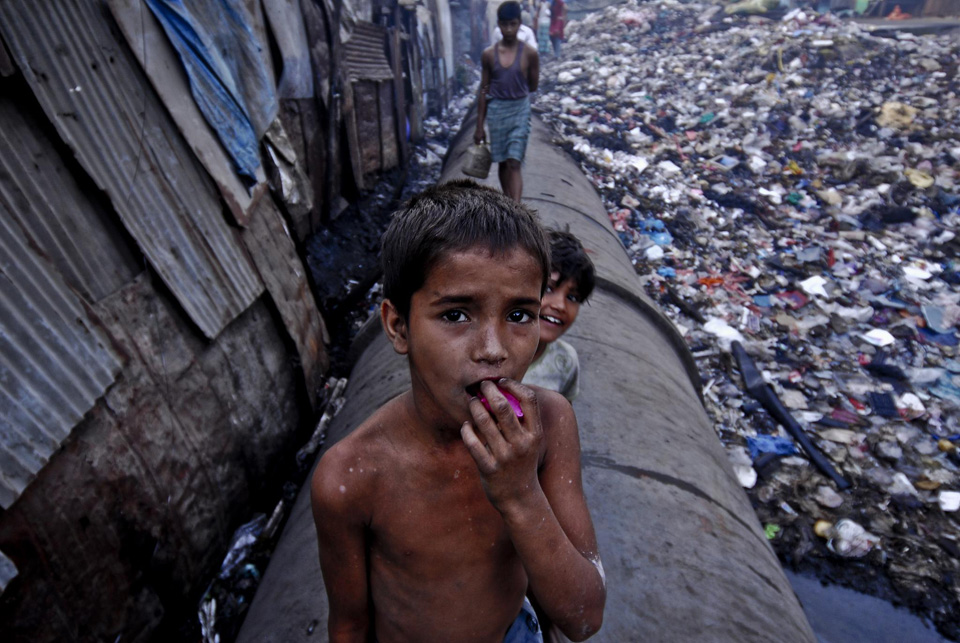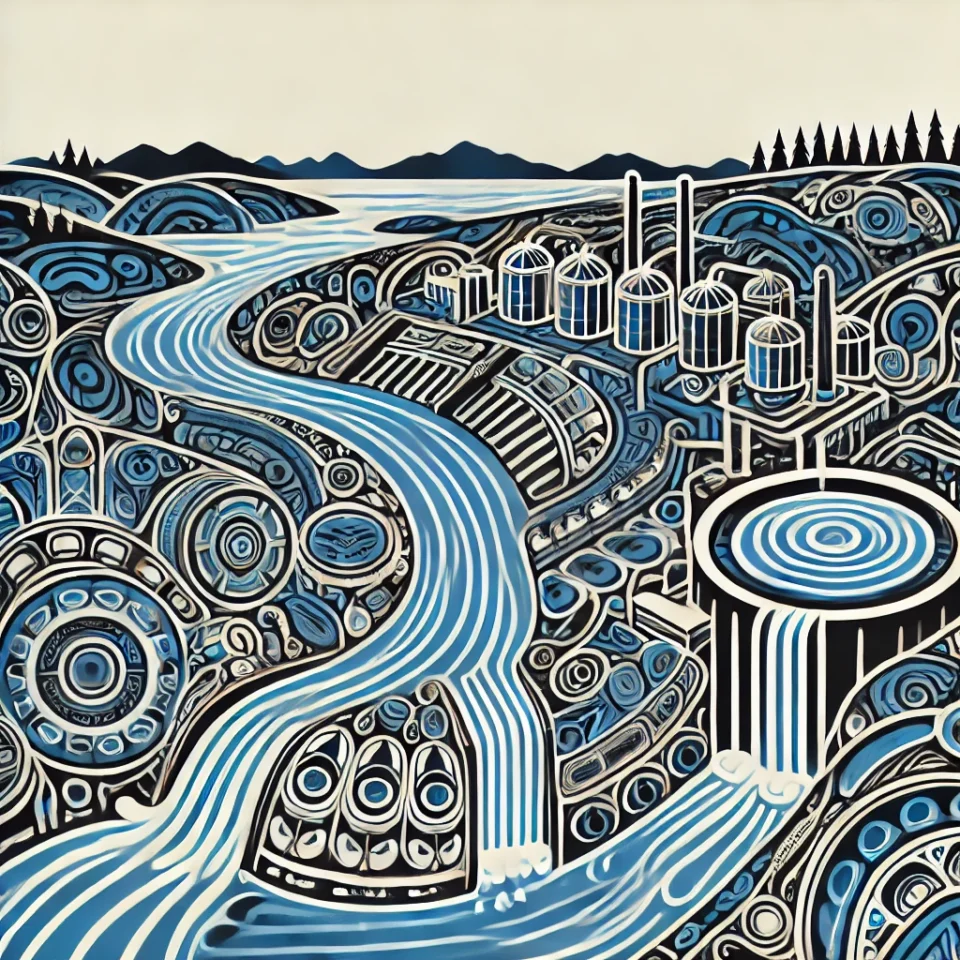
A boy stood at one of the big water pipes running across the Dharavi slum, photo: Lecercle/ Creative commons
Mariann Midbøe
In the past 20 years, India has been experiencing a high economic growth and celebrates this by taking a more central position in global politics. It is an important time for India with new challenges and a chance to consider what defines the nation. Ensuring access to adequate sanitation for its people is one of the country’s big challenges. Despite the surge in economic development India still ranks low on the scale of social indicators that measure standard of living. In a study from 2011 of the world’s 16 poorest countries (outside of Sub-Saharan Africa), India had the highest GDP per capita, but low rankings on most indicators of human development.
The country ranked number 13 out of 16 in regards to access to improved sanitation. Only 34 percent of the population had access to sanitation, while the average for the other countries in the study was 57 percent. Before India, there had never been a country that had experienced this level of economic growth while still maintaining a high level of human deprivation.
9.45 million latrines constructed
Sanitation is one of the most beneficial investments there are. It can benefit health, education and productivity. People with improved sanitation are less likely to spread diseases, take less sick days and fewer die from illness. It is a relatively cheap way for a country to provide a healthier life for its residents. Every dollar that gets invested in sanitation generates an average $7 in productivity gained and health costs avoided. Over the last twenty years millions of latrines have been built across India, and billions of rupees have been allocated to sanitation targets. Between 1986 and 1999, government programmes constructed 9.45 million latrines nationwide, which meant that 7.4 million people a year gained access to sanitation.
Although these are impressive numbers, the Indian government’s achievements regarding sanitation are diminished because of the rapid population growth and urban expansion.
“Slumbai”
The lack of sanitation in India’s urban areas is particularly challenging. The city of Mumbai is India’s economic hub, but has also been called the world’s slum capital, “Slumbai”, with about 10-12 million slum dwellers. They account for more than 50 percent of the city’s residents, but only occupy eight percent of the total area of the city. One of Mumbai’s biggest, and its most famous, slum is Dharavi with close to one million inhabitants. Officially it is considered that all of Dharavi’s residents have improved water and sanitation provisions, as official statistics state that 99.9 percent of the population for Mumbai have house taps.
The reality is quite different. In 2006, a survey estimated that there was one toilet for every 1440 resident in Dharavi. In addition to that, the appalling state of many public toilets make them no better option than open defecation, and so many residents squat along the railway tracks and in the outskirts of the settlements.
Slums have their own logic
It is supposed to be easier to provide sanitation for people in cities. They are denser, which should make it easier to connect households to pipes, and the urban population generally have more money to pay for it. Slums defy this logic: the areas are so densely populated that there’s rarely any available space to construct new toilets. While 89 percent of India’s urban population have access to safe drinking water, only 36 percent of households are connected to the sewer system.
The amount of people living in slums in India is increasing more than two times faster than the overall population in the country. The challenges of providing sanitation for a big population that live in crowded areas, is obvious by the lack of available space. One solution, which has been a viable option in informal settlements such as Dharavi, has been the construction of community toilet blocks. Local NGOs ask slum dwellers to participate in constructing and maintaining them, and employ plumbers, joiners and artisans from the local area and get funding from the government. The toilets they build have designs that are specifically appropriate for the slum communities, and are built in central locations to help ensure that they are kept clean and informally monitored. The NGOs hand over the control of the toilets to the communities after a yearlong transition, and so the failure or success depends on their self-mobilization.
Must involve different groups of society
In an interview earlier this year, Indian economist Amartya Sen explained that some adversities, such as the lack of adequate sanitation, might not be considered as urgent as famine deaths. A greater sense of commitment and social understanding is required in order to use democratic pressure that will prove to be effective. The slum dwellers are the ones that have to endure the daily lack of adequate sanitation. They have a strong interest in improved systems as the deprivations limit their social and economic mobility. It is therefore important to note that a possible solution has to involve various groups of society. Community toilet blocks might not be a sustainable solution for the whole country, but by engaging government, NGOs and local communities they have been able to address many of the problems concerning India and sanitation.
Mariann Midbøe conducted fieldwork in Dharavi in the spring of 2014.


 Vannets kretsløp:
Vannets kretsløp:
 Funksjon:
Funksjon: Hovedutfordringer:
Hovedutfordringer: